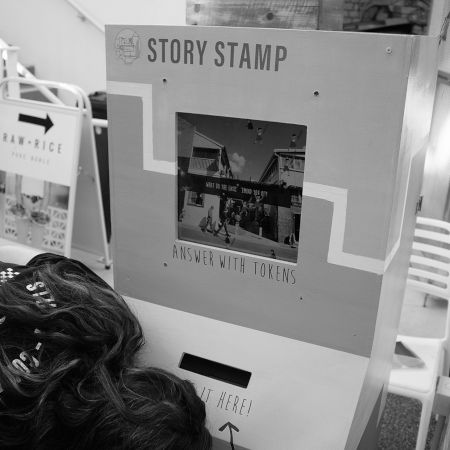Research /
Urban Probes
Exploring the complexity of decisions and experiences in and with the city
Prototyping a media architecture design solution, such as a digital facade, community LED wall or responsive sidewalk, means implementing enough of it to allow it to be tested by stakeholders and potential users. In doing so, designers can more confidently evaluate what it means to experience solutions in real life, and thus how appropriate they may be, reducing risks and costs of development and implementation. However, by its very nature, media architecture poses two big challenges to prototyping. First, it presupposes access to the target urban location and its infrastructure, which may not always be logistically practical, safe or even legally allowed before the solution reaches a certain level of maturity. Second, evaluating different options in situ may be too costly, particularly when comparing a range of choices for hardware, scale or placement of media within the city.
Virtual Urban Prototyping (VUP) involves the simulation, exclusively via software, of media architecture solutions for an urban space. Approaches can vary from the very simple to the highly sophisticated, depending on skills and resources available. In its simplest form, for example, it can be achieved merely with a photo or 2D digital representation of the target site, which can then be loaded as the background for an interactive code sketch—for example, in Processing or JavaScript—and overlaid with interactive graphics or animations. More advanced approaches may involve interactive 3D models of the media architecture, potentially accessible online. General steps include problem definition, platform selection, implementation, testing, analysis and recommendations.
The advantage of this approach is to enable the testing of interactions between humans and digital media in the built environment, which are often difficult to assess otherwise. As such, VUP can be highly useful for at least four reasons: (1) it allows specific elements of the solution to be tested, swapped, tweaked or combined in different ways without too much effort, in a safe and affordable way; (2) it can be particularly effective for identifying and eliminating unsuitable approaches early on in the project, thus helping narrow down the array of possible solutions; (3) it can assist with futureproofing a solution, by simulating options perhaps not yet entirely viable at present but which could eventually be scaled up; and (4) as the software can be distributed across members of a team, it allows for remote collaboration during design and testing. On the flip side, VUP’s main drawback is that the user lacks the feeling of being immersed in the city, subject to all its spontaneous elements. As a result, VUP can only offer partial impressions into what the media architecture solution may actually feel like at the target site.
VUP should be used by urban interaction designers, product designers, artists, architects, urban planners or managers of media architecture projects. By offering a convenient way to ‘mix and match’ design elements and progressing through iterations of the design solution, VUP can be a powerful method to justify concepts, equipment and budget figures, as well as supporting decision-making, both prior to a proposal submission and during the early stages of design and development.
Method Steps
-
Choose a topic of interest you would like to investigate. Urban probes are best suited for topics that are location specific.
-
Identify a location where the urban probe is likely to be used or deployed.
-
Identify actors (e.g. using actor mapping) who can help you develop contextual knowledge around your topic and location.
-
Study the identified location, including people’s perception of the place, people’s experience of the place and their movement throughout the place.
-
Facilitate blue sky design conversation with the actors to explore creative and innovative ideas for how to create your urban probe. You could develop some ‘how might we’ questions:
-
How might we help people reflect on the topics of interest?
-
How might we develop a better understanding of the topics of interest?
-
How might we make the discussion of the topics of interest playful and engaging?
-
-
Consolidate the blue sky design concepts and refine possible representations through lo-fi or hi-fi prototyping.
-
Refine your urban probe and consider what data you want to collect and how. How will the collected data help you with your research questions?
-
Plan for urban probe deployment, including logistics (like access to power if needed), time of deployment, transport, safety, and risk assessment.
-
Deploy your urban probe in place.
